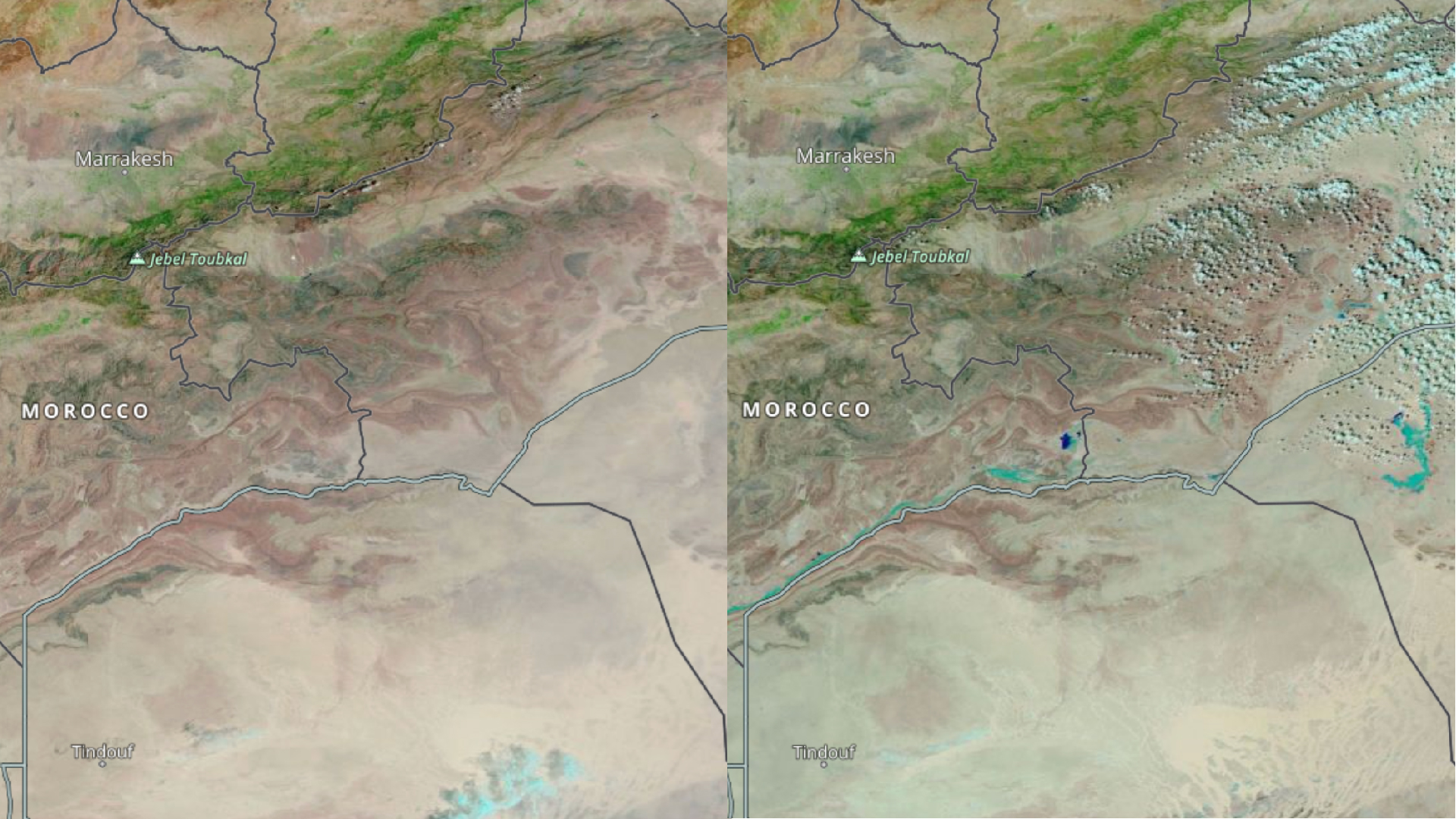Sahara desert hit by extraordinary rainfall event that could mess with this year's hurricane season
The world's largest hot desert, the Sahara, is being hit with unusually heavy rain. Scientists are unclear why, but it may be linked to a subdued Atlantic hurricane season.

An unusual deluge of rain is hitting the Sahara, one of the driest regions on Earth. It's unclear exactly why the desert is experiencing so much rain, but it could be connected to an especially quiet Atlantic hurricane season, scientists say.
The rain is so heavy that some usually dry regions of North Africa are now experiencing monsoons and flooding, with parts of the Sahara predicted to see five times their average September rainfall.
Precipitation in the Sahara overall is not completely uncommon — the region is huge and diverse, and some parts often receive small amounts of rain, Moshe Armon, an atmospheric scientist at the Federal Technical University (ETH) Zürich, told Live Science. But now larger portions of the Sahara are being inundated, including areas further north where it's usually drier, Armon added.
Some scientists suggest this is part of Earth's natural climate fluctuation, while others say it's a product of human-induced climate change. "The answer is probably somewhere in between," Armon said.
Related: Gulf Stream's fate to be decided by climate 'tug-of-war'
This climatic shift in the Sahara may be connected to a weaker Atlantic hurricane season. This year's hurricane season has been quiet so far, despite predictions early in the summer of severe hurricane activity due to high ocean temperatures. Meteorologists noted this was the first Labor Day weekend in 27 years without a named storm forming in the Atlantic.
Over half of named storms and 80% to 85% of major hurricanes in the Atlantic each year usually come from the region just south of the Sahara, Jason Dunion, a meteorologist at the National Oceanic and Atmospheric Administration (NOAA), told Live Science in an email.
Sign up for the Live Science daily newsletter now
Get the world’s most fascinating discoveries delivered straight to your inbox.
During a typical hurricane season, atmospheric waves move off the western coast of Africa and into the North Atlantic Ocean, along what's called the Intertropical Convergence Zone (ITCZ) — a belt circling close to the equator, where air from the Northern and Southern hemispheres meets. The ITCZ belt can carry clouds, rain and storms. The atmospheric waves carried west along the ITCZ over the Atlantic, combined with warm Atlantic waters, develop into tropical storms and hurricanes.
But part of the ITCZ has shifted north this year, over the northern Sahara. Scientists are not completely clear why this is happening now, although climate models have previously predicted the ITCZ will move north due to ocean warming, and warmer air temperatures, as carbon emissions heat the Northern Hemisphere faster than the Southern Hemisphere.
The effect of the current northward shift is that the ITCZ pushes rain further north in Africa than usual — across the Sahara — while those atmospheric waves from Africa are also displaced north of their usual path. Without ITCZ moisture moving over the warm Atlantic, the ingredients aren't all there for severe storms to develop.
However, the peak of the Atlantic hurricane season is typically mid-September, so a lull in the season doesn't mean a severe and dangerous Atlantic storm can't still occur.
The unusually high amounts of rain in the Sahara, meanwhile, could also be thanks to warmer-than-usual waters in the North Atlantic Ocean and Mediterranean Sea. If one of these rare precipitation events occurs, and the weather system happens to move over much warmer ocean or land, the chances of severe precipitation go way up.
And the Sahara could continue to experience wetter conditions in the future. Human activities, especially greenhouse gas emissions, are driving oceans to absorb more heat. Some climate models predict warmer oceans will shift monsoon rain further northward in Africa by 2100, meaning more rain could fall in typically drier regions. Climate models also predict increasing greenhouse gas emissions could make the Sahara even rainier in the future.

Olivia Ferrari is a New York City-based freelance journalist with a background in research and science communication. Olivia has lived and worked in the U.K., Costa Rica, Panama and Colombia. Her writing focuses on wildlife, environmental justice, climate change, and social science.










